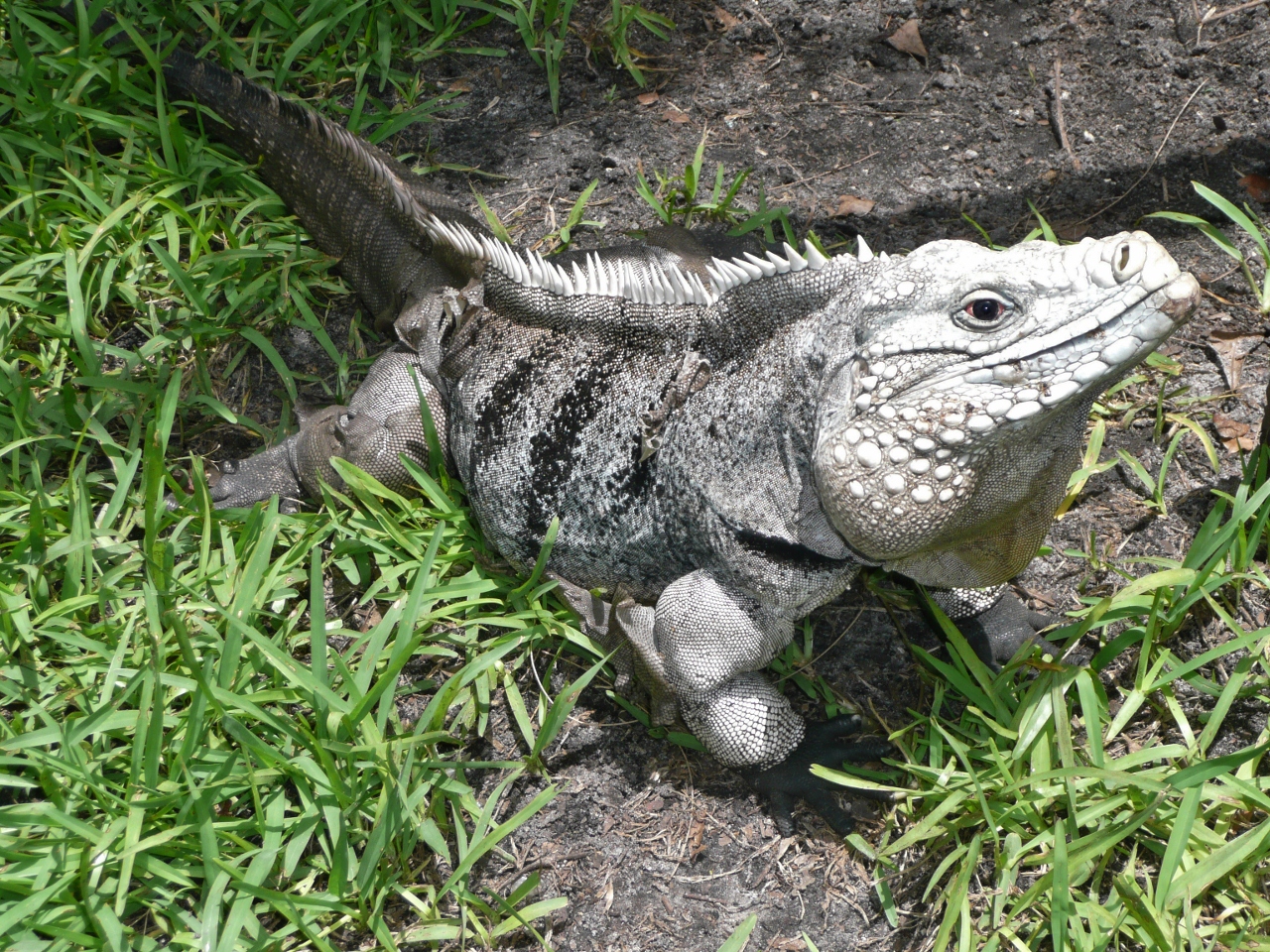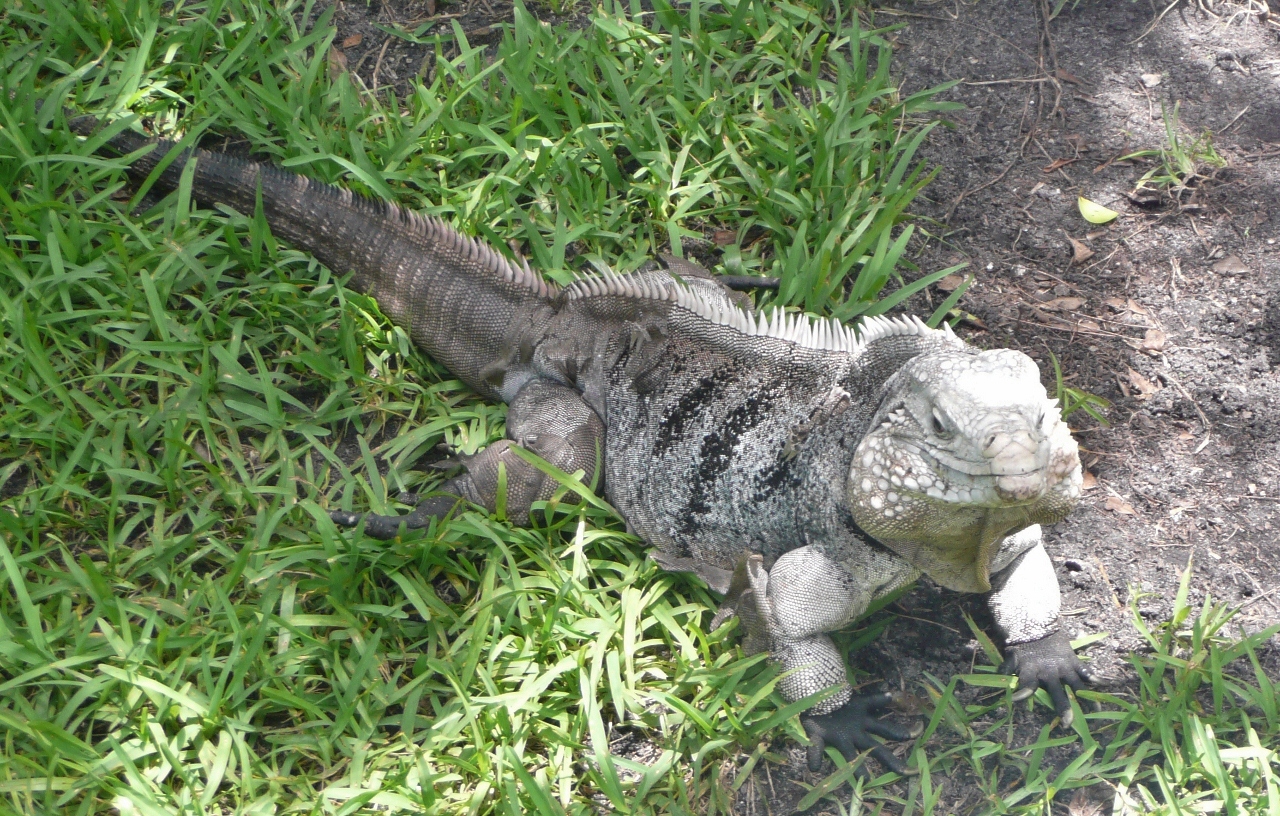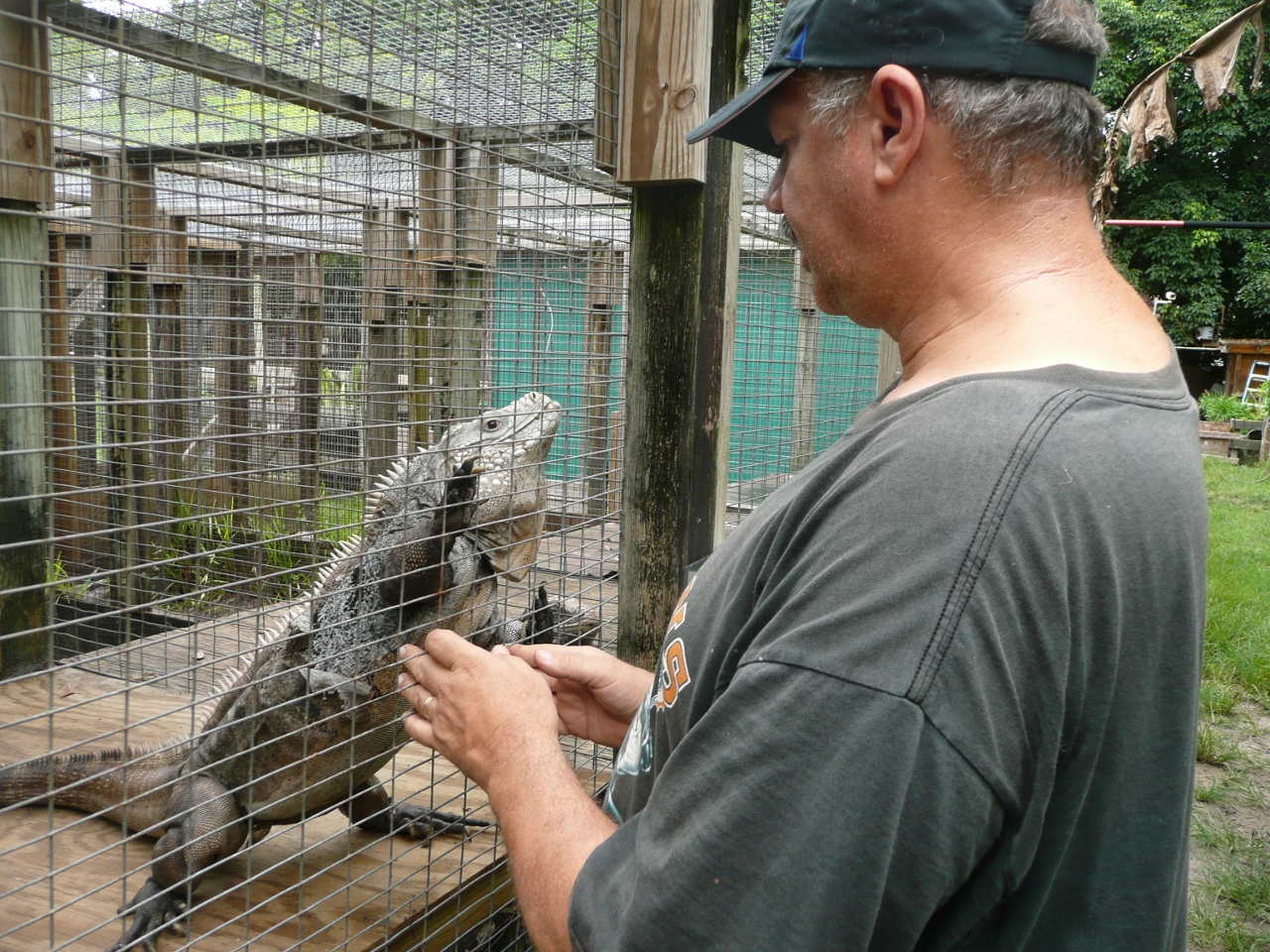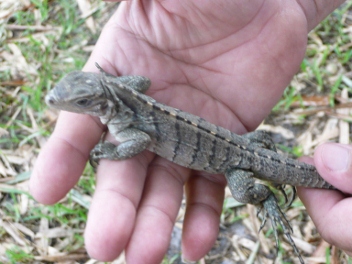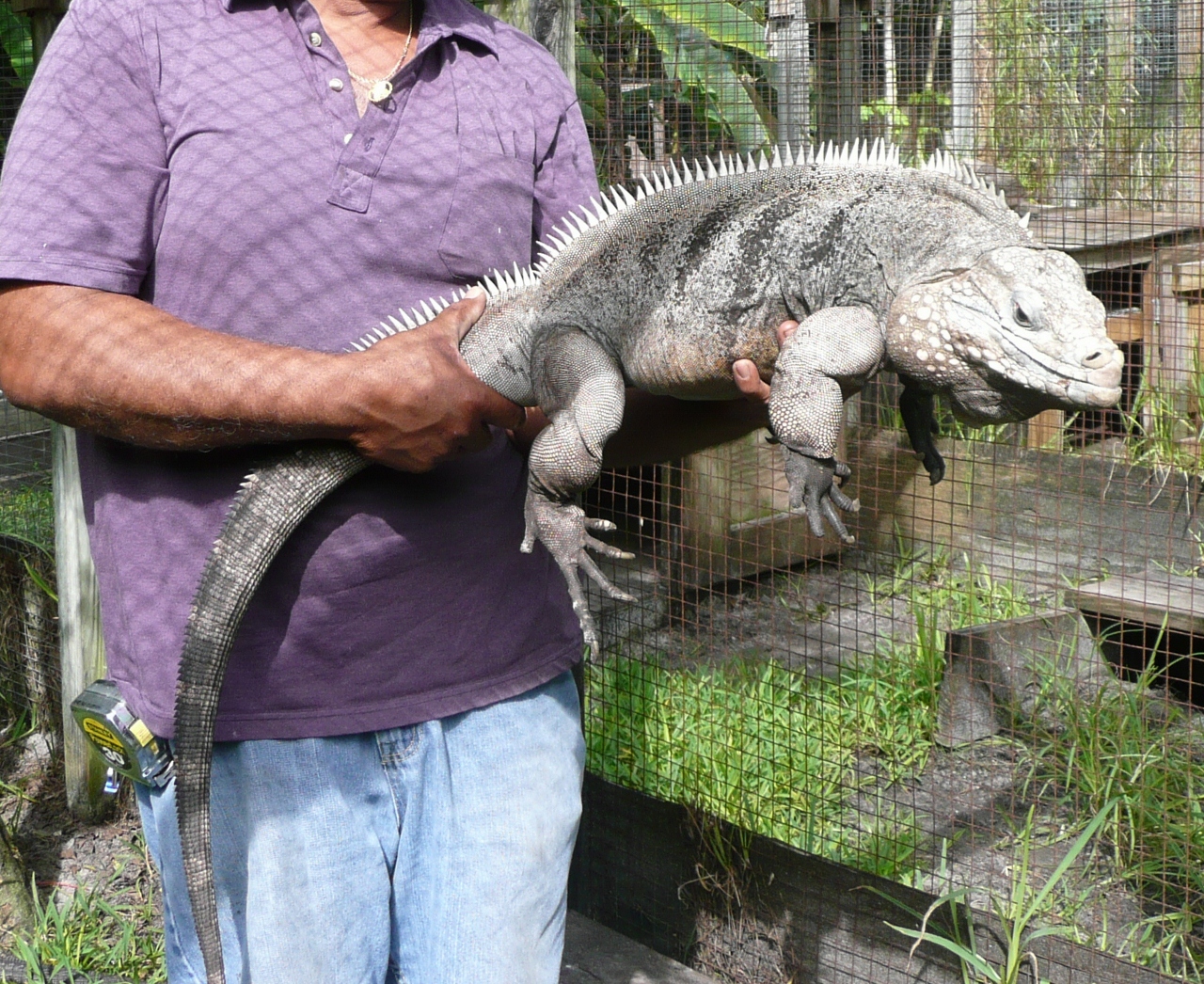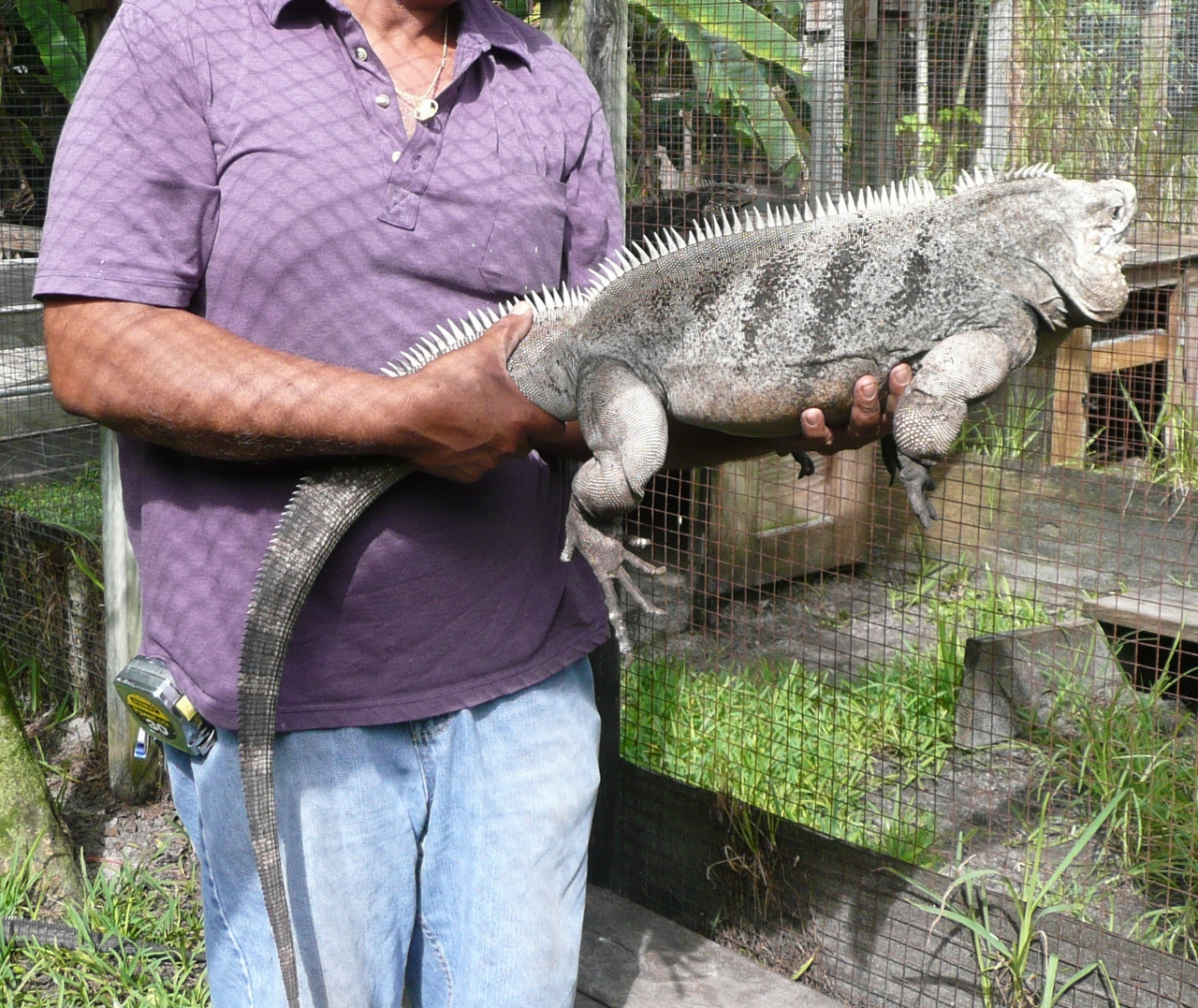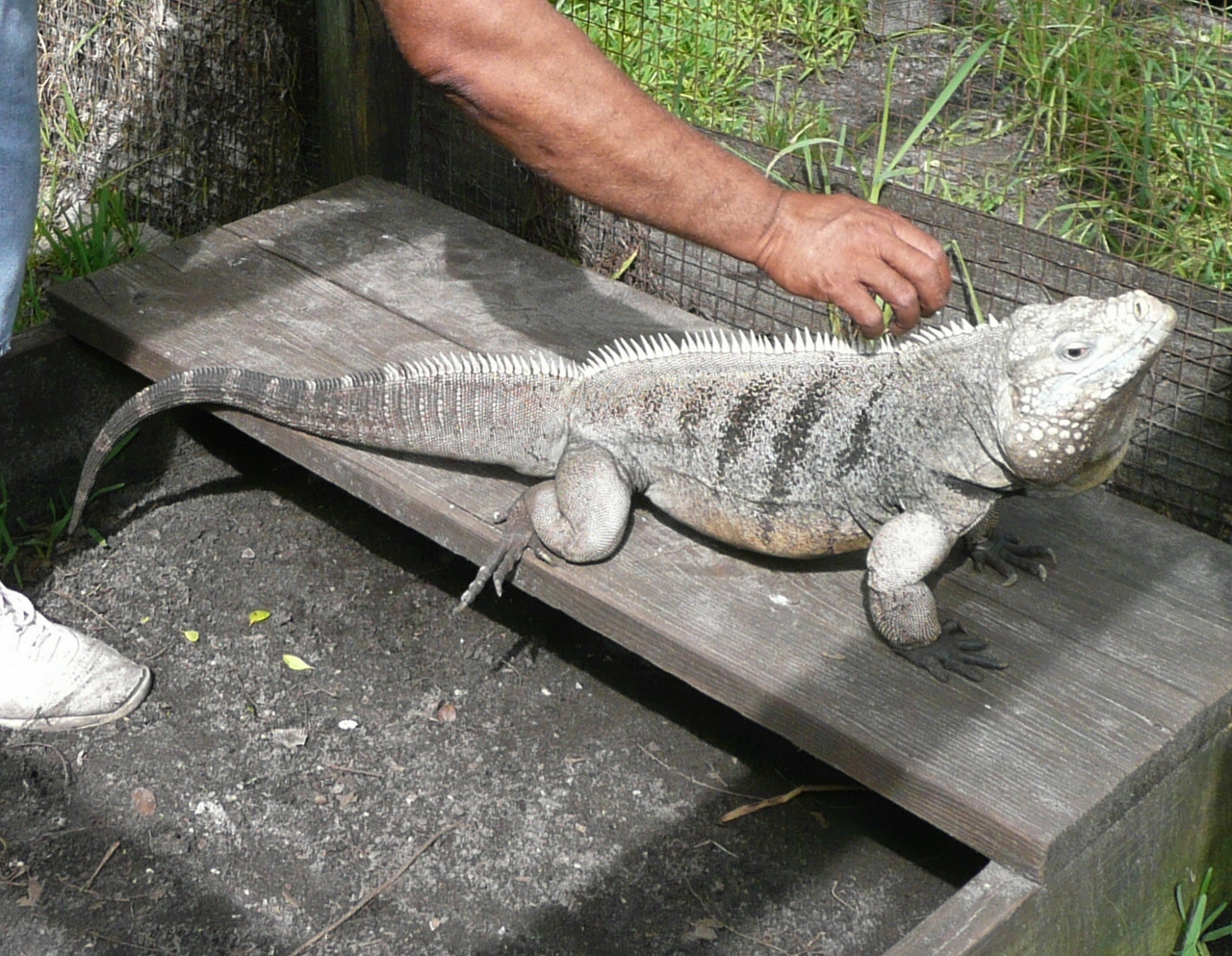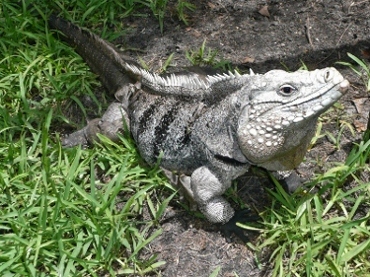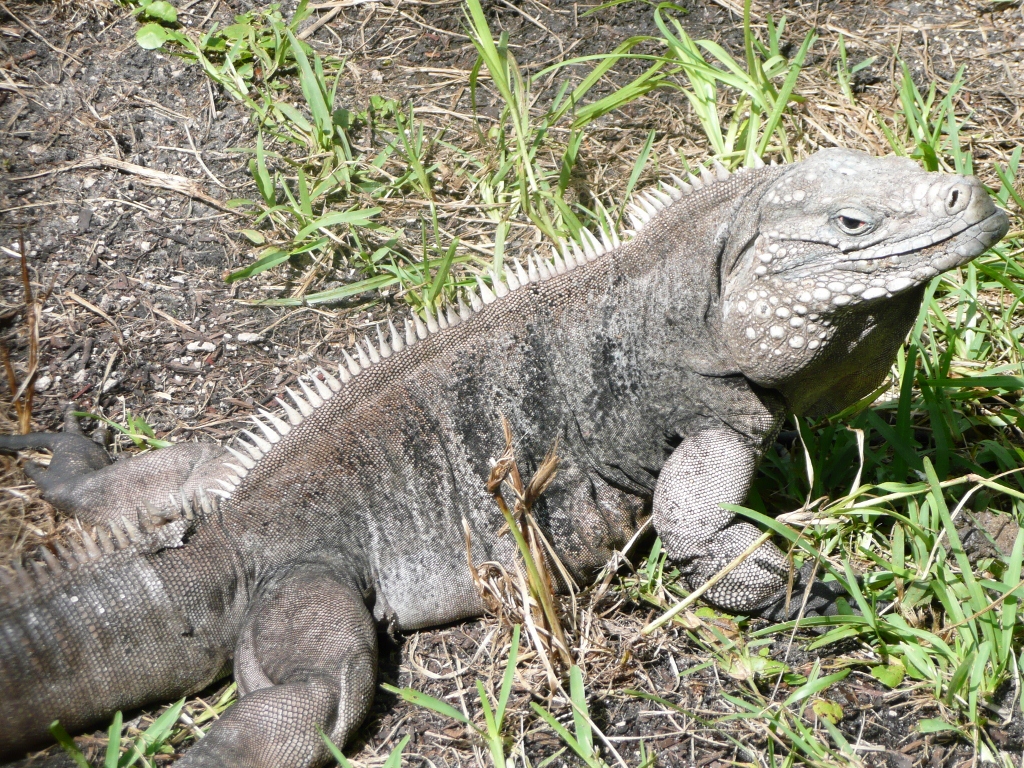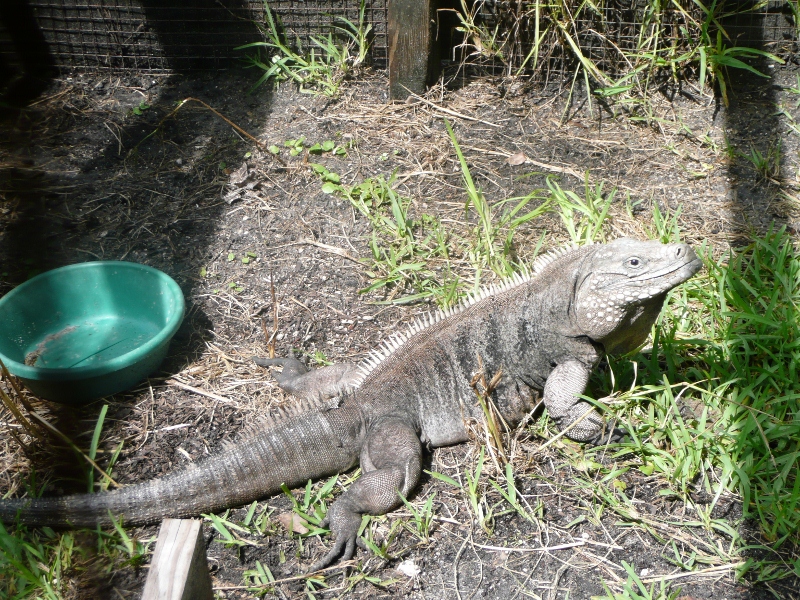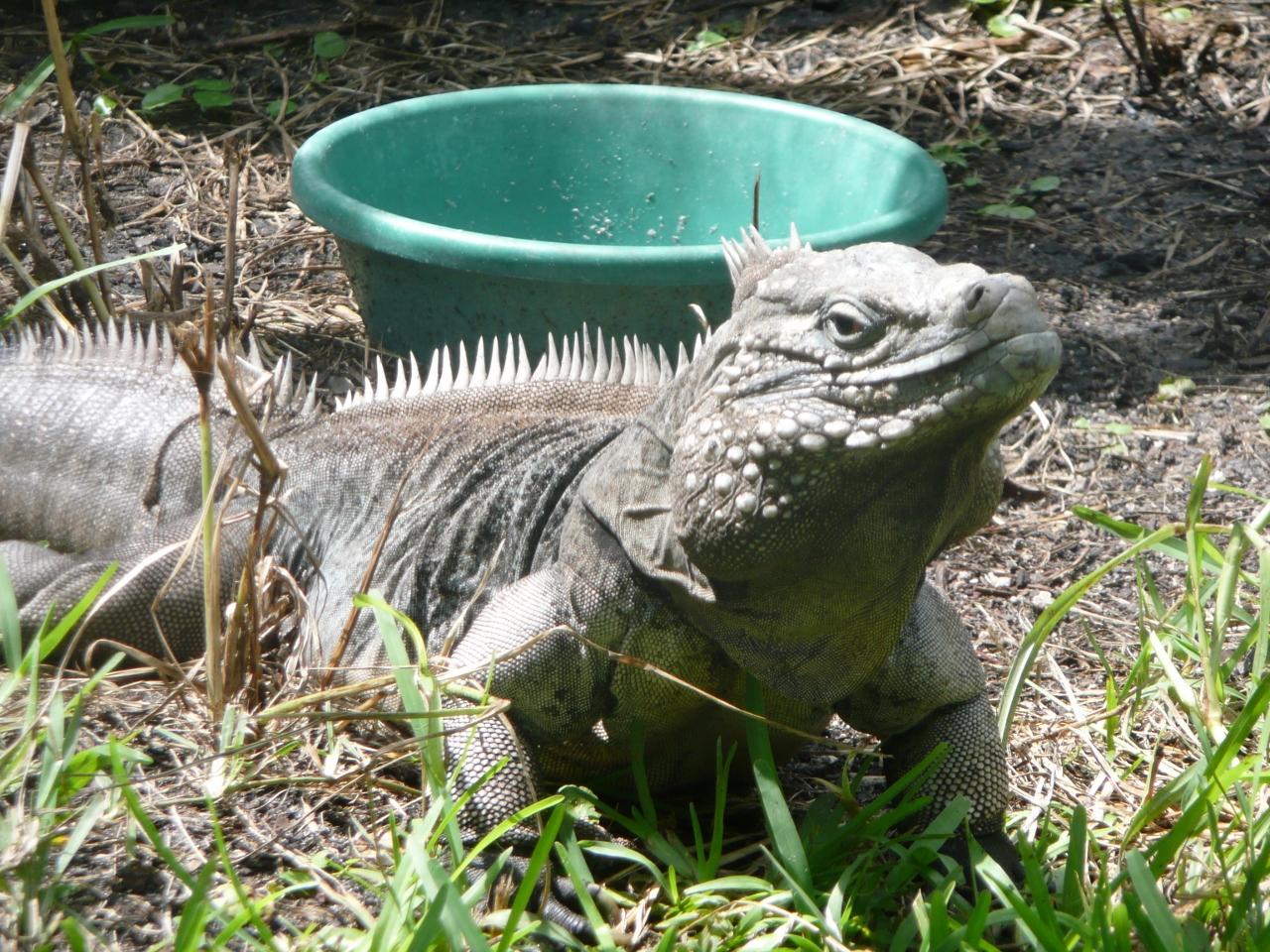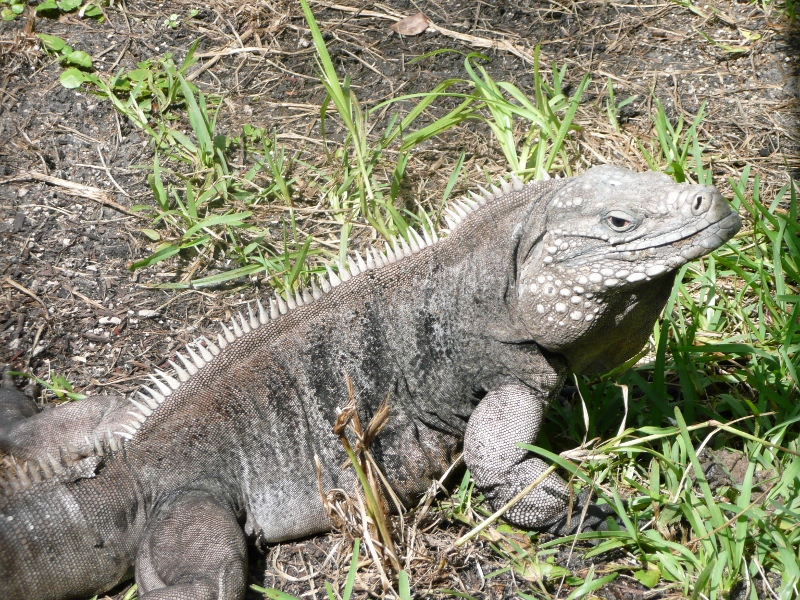Cayman Brac
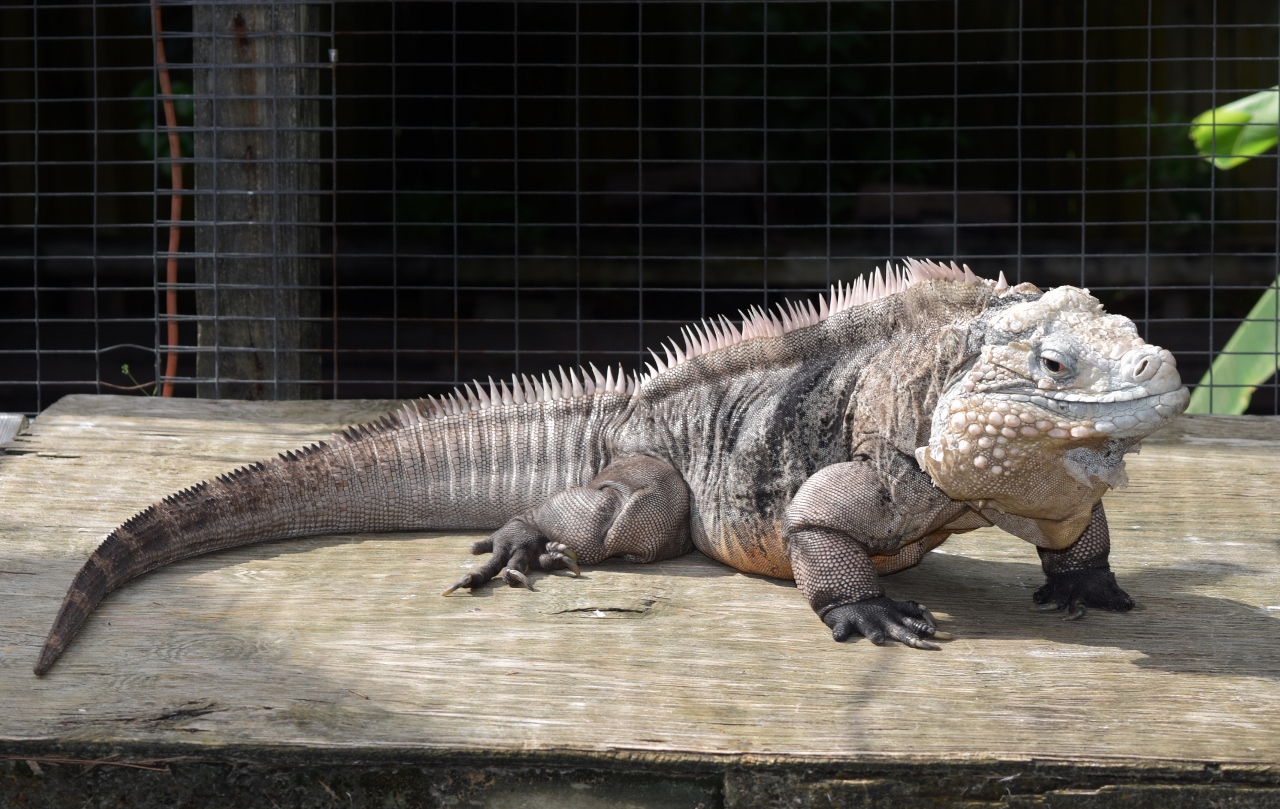
Cyclura nubila caymanensis, captive specimen in Hope Gardens, Jamaica.The Lesser Caymans Iguana, Cyclura nubila caymanensis, is a large animal with a body length of 20 to 30 inches and an equally long tail. Males are significantly larger than females. The Lesser Caymans Iguana has a skin color from light grey to green when mature, with a light blue or reddish-pink colored head, whereas females are more olive green, lacking any red or blue. Young animals tend to be uniformly dark brown or green with faint dark bands. Their distinctive black feet stand in contrast to the rest of their lighter overall body color. Their eye-color is typically brown to blood red. An individual of this subspecies has been recorded as one of the longest lived of all species and subspecies of the genus Cyclura at 33 years.
Males are larger than females, and have more prominent dorsal crests in addition to prominent femoral pores on their thighs, which are used to release pheromones. Females have less prominent pores and have shorter crests than the males making the animals sexually dimorphic.
Archived - Cyclura Cayman Brac Videos
Archived - Cyclura Cayman Brac Descriptions
Taxonomy
The Lesser Caymans Iguana, Cyclura nubila caymanensis, is endemic to the islands of Little Cayman and Cayman Brac. It is a subspecies of the Cuban Iguana. This subspecies has been introduced to Grand Cayman, where it has interbred with that island''s native Blue Iguana, (Cyclura Lewisi).
The generic name (Cyclura) is derived from the Ancient Greek cyclos meaning "circular" and ourá meaning "tail", after the thick-ringed tail characteristic of all Cyclura. Its specific name, nubila, is Latin for "gray" but in this instance is a Latinized form of the name of John Edward Gray, the British zoologist who first described the Cuban Rock Iguana as a species in 1831 as opposed to the animal''s base color. Its subspecific name Caymanensis refers to the island where it lives being a Latinized form of "Cayman".
Zoologists Thomas Barbour and Gladwyn Kingsley Noble first described the Lesser Caymans Iguana as a species in 1916. Chapman Grant, in a monograph published in 1940, formally described the Lesser Caymans Iguana for the first time as a subspecies: Cyclura macleayi caymanensis.
In 1975 Albert Schwartz and Thomas established the trinomial nomenclature, Cyclura nubila caymanensis for the Lesser Cayman Iguana. They maintained that this lizard was a subspecies of Cyclura nubila nubila commonly known as the Cuban Rock Iguana(the species from which it evolved and can breed with if placed together under artificial conditions).
Anatomy and morphology
Cyclura nubila caymanensis, captive specimen in Hope Gardens, Jamaica.The Lesser Caymans Iguana, Cyclura nubila caymanensis, is a large animal with a body length of 20 to 30 inches and an equally long tail. Males are significantly larger than females. The Lesser Caymans Iguana has a skin color from light grey to green when mature, with a light blue or reddish-pink colored head, whereas females are more olive green, lacking any red or blue. Young animals tend to be uniformly dark brown or green with faint dark bands. Their distinctive black feet stand in contrast to the rest of their lighter overall body color. Their eye-color is typically brown to blood red. An individual of this subspecies has been recorded as one of the longest lived of all species and subspecies of the genus Cyclura at 33 years.
Males are larger than females, and have more prominent dorsal crests in addition to prominent femoral pores on their thighs, which are used to release pheromones. Females have less prominent pores and have shorter crests than the males making the animals sexually dimorphic.
Distribution and habitat
Cayman IslandsNative to the islands of Little Cayman and Cayman Brac, this subspecies has been introduced to Grand Cayman.
Like other members of the Genus Cyclura the Lesser Caymans Iguana requires suitable areas in which to bask, forage, nest, and hide. On Little Cayman these requirements are met in a variety of interior habitats even though the iguanas are widely dispersed.
Diet
Like all Cyclura species the Lesser Caymans Iguana is primarily herbivorous, consuming leaves, flowers and fruits from over 100 different plant species. This diet is very rarely, if ever supplemented with animal matter.
Mating
Mating occurs in April to May depending when the dry season ends, and 7-25 eggs are usually laid in May or June depending on the size and age of the female. Due to being forced to dwell inland where the soil is rocky, the females often have to migrate to coastal areas in order to build their nests in the sand. The hatchlings emerge from the nests in August to early September.




